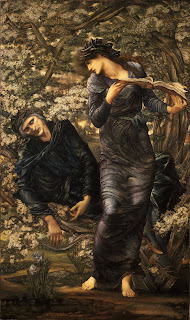Armor is something I have never been totally satisfied with in D&D. It’s not because I object to the abstraction of armor making characters harder to hit rather than preventing injury (though I have written about that before). Rather, I don’t much like the idea that a magic-user can’t strap on a breastplate and get some benefit from it. This is not a major problem for me; I don’t have any issue playing traditional B/X with all the armor and weapon restrictions and having a great time. But it does seem like an imperfection.
That being said, I do think fighters should be better at using armor. The weapon restrictions problem, which is similar, has been very elegantly handled, in my opinion, using damage by hit die rather than by weapon (which I originally based on Akrasia’s damage by class). Perhaps something similar could be done for armor without totally modifying the underlying system?
First, I am going to fall back on my earlier assumption of a threefold armor classification (light, medium, and heavy corresponding to leather, chain, and plate). Traditionally, there are also several types of character class regarding armor use. The heavily armored classes can use plate (fighters and clerics). The lightly armored classes, such as thieves, which can only wear leather. And finally the unarmored classes, such as magic-users, which can wear no armor.
My basic idea is that by default, armor grants one point of AC per tier. So, for example, leather armor would grant +1 AC and plate armor would grant +3 AC. Someone with no armor skill (such as a zero level character or a magic-user) who straps on a suit of plate thus only gets +3 AC.
Additionally, characters gain an AC bonus equal to their armor skill if their armor skill is equal to or less than the AC bonus of the armor in question. The armor skills by class are:
- Cleric (heavy): +3
- Fighter (heavy): +3
- Magic-user (none): +0
- Thief (light): +1
In other words, you get to double the AC bonus when using armor of a tier less than or equal to your (class-based) armor skill. None of the big four classes seem to have medium armor skill (though in terms of balance, the cleric probably should). However, there are a number of subclasses that seem like they would naturally have medium armor skill, such as the ranger.
Effective AC Bonus
| Class |
Armor Skill |
Light (leather) |
Medium (chain) |
Heavy (plate) |
| Cleric |
+3
|
+1 +1 = +2
|
+2 +2 = +4
|
+3 +3 = +6
|
| Fighter |
+3
|
+1 +1 = +2
|
+2 +2 = +4
|
+3 +3 = +6
|
| Magic-User |
+0
|
+1 +0 = +1
|
+2 +0 = +2
|
+3 +0 = +3
|
| Thief |
+1
|
+1 +1 = +2
|
+2 +0 = +2
|
+3 +0 = +3
|
In the table above, each armor column has three numbers: the inherent armor bonus, plus the class armor skill bonus, which together = the full AC bonus. The armor skill bonus only kicks in if it is not greater than the armor bonus. So, for example, a thief, who only has an armor skill of +1, gets no armor skill bonus when wearing chain, making chain equivalent in terms of protection to leather (though the thief can still wear chain if circumstances require it).Similarly, for example, magic-users benefit much less than fighters from plate, but a magic-user in plate is still better armored than a magic-user in leather. In effect, this system defines how much protection comes from just wearing the armor and how much protection comes from skill at fighting in armor. Some classes may get less benefit from wearing armor, but all penalties, whether they are encumbrance, speed reduction, thief skill impairment, spell failure chance, or anything else, apply in full. All else being equal, a thief will thus gain the same AC bonus from leather as they would from chain, but will take fewer penalties in the leather. The same thief will be slightly more protected in plate, though presumably at the cost of rather still penalties to sneaking and maybe fleeing (depending on the specific armor penalty rules that are active).
Potential AC bonus from a shield is equal to half the armor skill, rounded down, meaning that thieves (who have a +1 armor skill) and magic-users (who have a +0 armor skill) would gain no benefit from using a shield, and fighters (who have a +3 armor skill) would gain a +1 from using a shield (as would any class that was deemed to have a medium armor skill). This ends up outputting the original numbers, which is nice, but also means that it is impossible to gain any benefit from a shield without armor skill, and I’m not sure that is satisfactory. Provisionally, I think characters without enough armor skill to use a shield should be able to get the +1 AC if they spend their action focusing on using the shield to defend.
Incidentally, this same system could easily be used with Hexagram, substituting the path of battle “defense” trait (or something derived from it) for the armor skill bonus described above.









